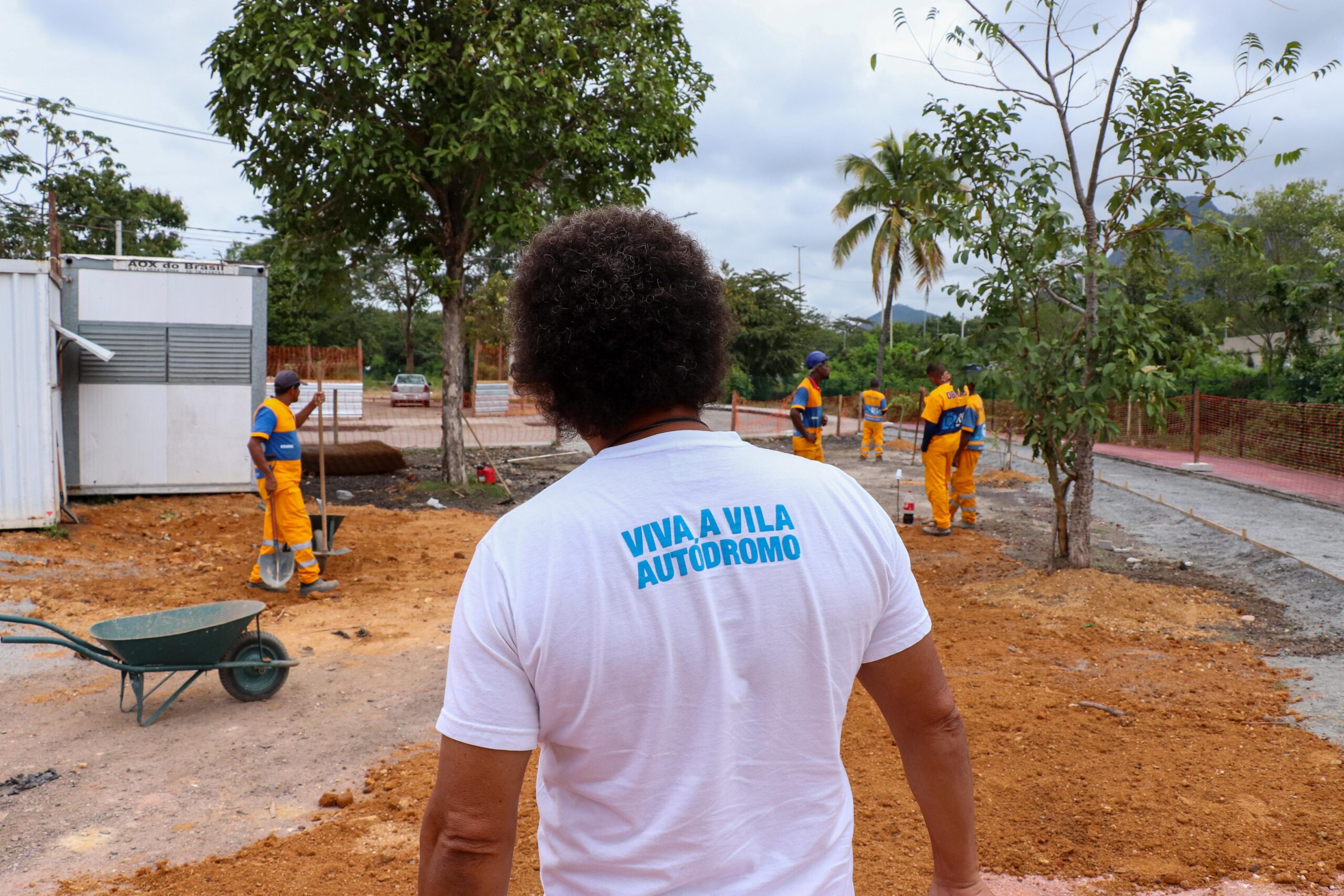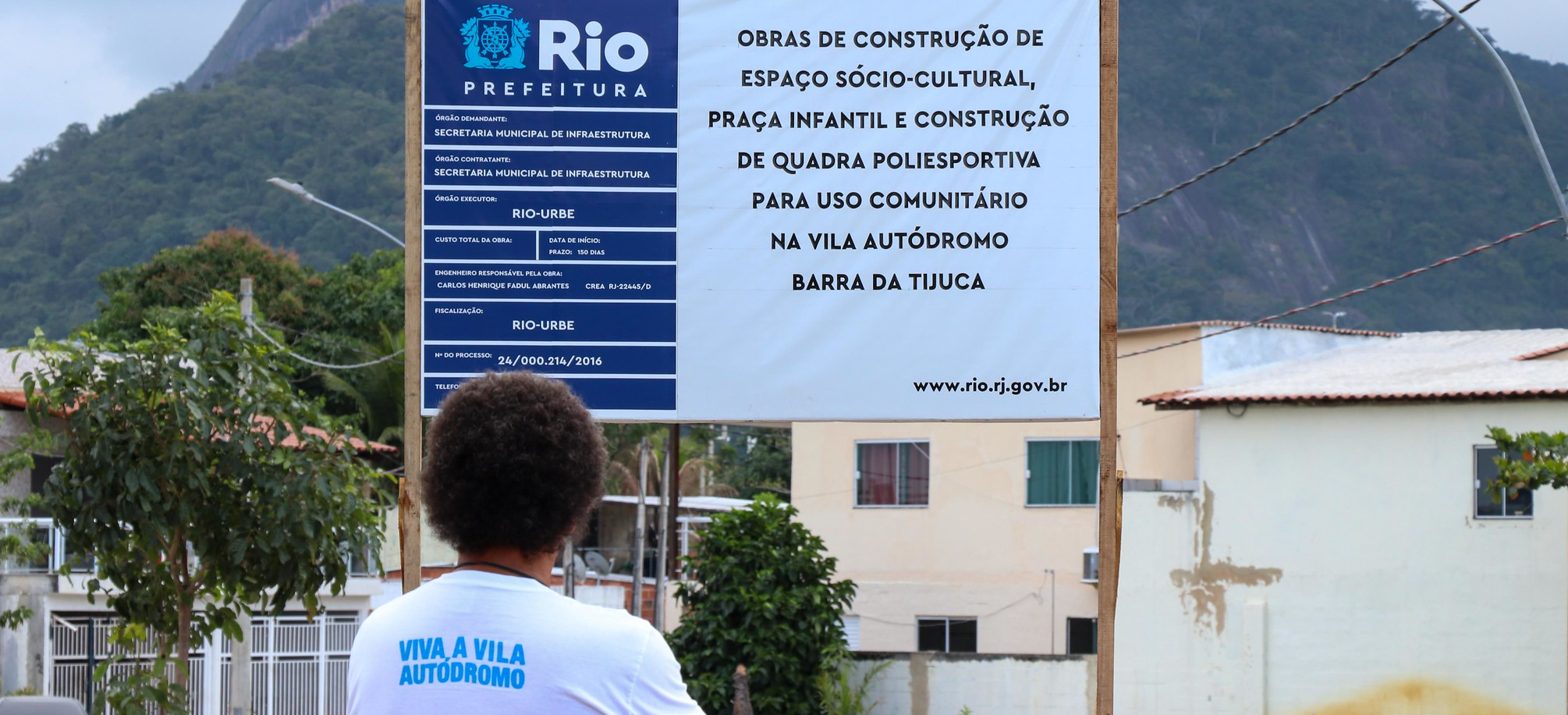
Since July 2022, the City of Rio de Janeiro has finally resumed the second stage of its project to upgrade Vila Autódromo, a community that was originally a favela located in the city’s West Zone known for its heroic resistance against evictions associated with the 2016 Rio Olympic Games. Roughly 700 families were evicted—having had their properties seized during the years leading up to the Olympics. At the time, the City, under Mayor Eduardo Paes, signed an agreement with the 20 families who were able to resist eviction until the end, that they would be resettled in homes built by the City on the same land by July 29, 2016, the date that reflected the start of the Olympic Games. It was also promised that works to develop community public spaces would begin 60 days after the end of the Paralympics, on September 18 of that year.
Now, six years after upgrading plans were made official, workers from the Municipal Upgrading Company (Rio-Urbe) have broken ground on construction of the cultural center, children’s playground, and multi-sports court in Vila Autódromo. The delivery of these projects is yet another victory in the tireless struggle of the residents who resisted to remain in their territory and have been fighting to this day.
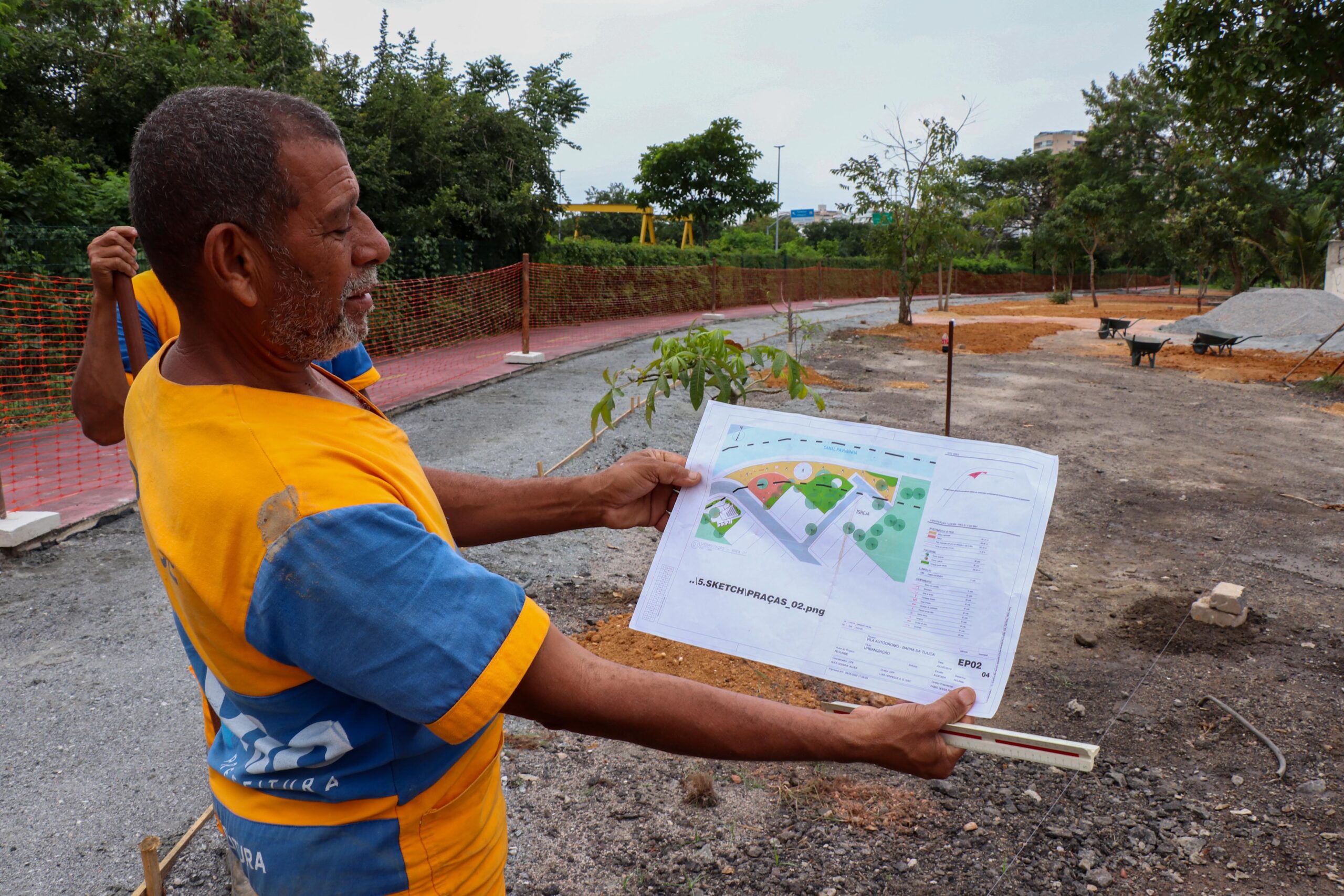
Luiz Cláudio Silva, one of the residents who fought and still lives in Vila Autódromo, explains the origins of the agreement established on April 13, 2016 to rebuild the community torn apart by the traumatic forced eviction: “When these houses were delivered, a collective contract was drafted and the Public Defenders’ Office added the physical improvement works [to be made], because they are public spaces [we had that were] destroyed through injunctions. They took away our residents’ association—which was also a cultural center—the playground and the sports court.”

Maria da Penha Macena argues that the residents who remained decided not to take the compensation payments offered by the municipality so that community spaces could be built: “When they got rid of our [residents’] association, an technician came, made some calculations and offered compensation, but the residents didn’t want it. The residents left in the community, these 20 families, made the decision that instead of receiving this compensation, the city would build the residents’ association. At the time, it was about R$650,000 (US$126,500) and we never got that money. The second stage of construction works which are being finished now, were approved through the courts. [But according to] the extrajudicial contract, the right thing would have been [to deliver the building] two months after the Paralympics.”
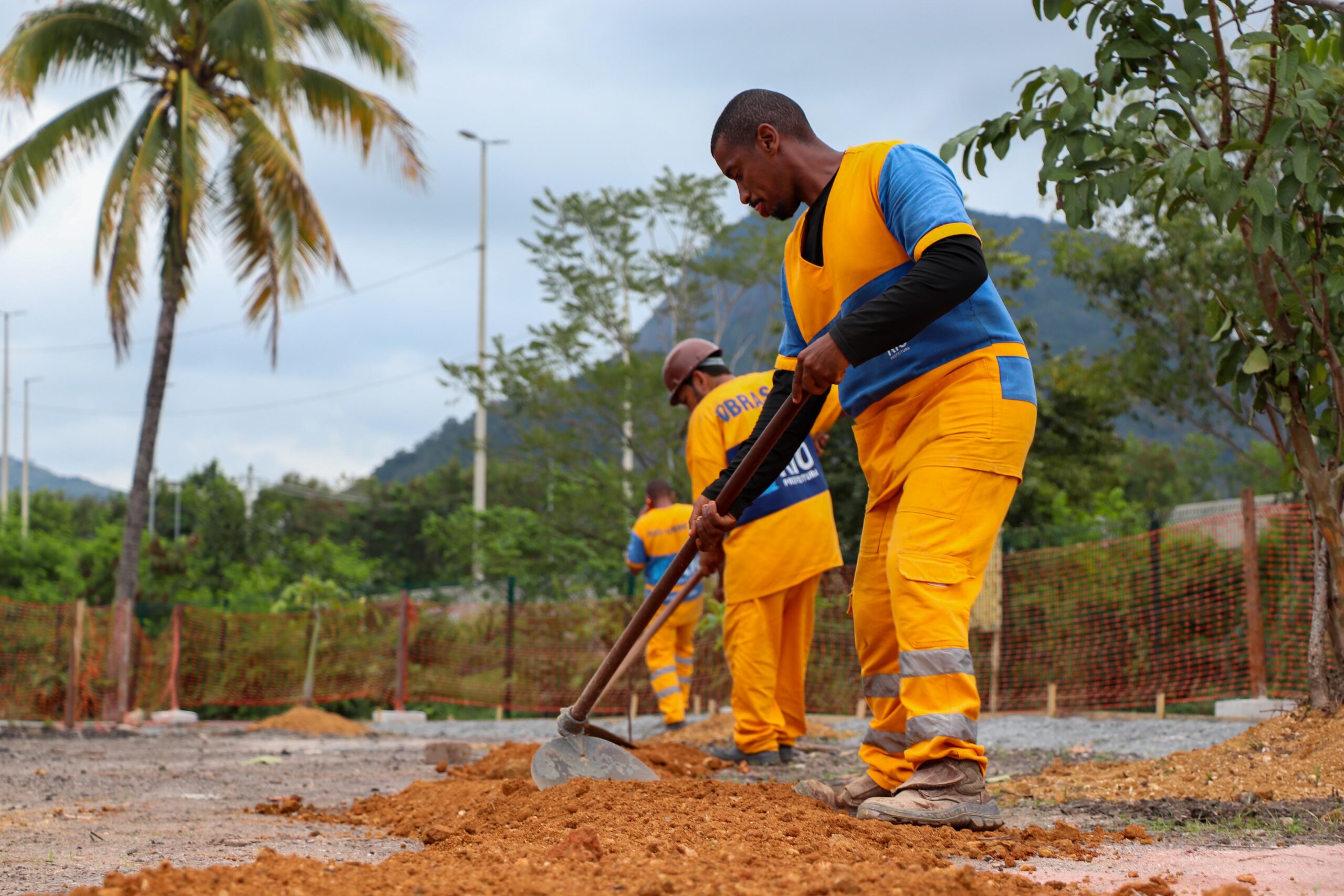
“The Paralympics ended on September 22, 2016. According to the contract signed by the city, the Public Defenders’ Office and us, the residents, they were supposed to have started these works six years ago. The project should have been delivered in eight months [early 2017]. [In terms of] the current works, they said it would last five months, but now they’re talking about eight,” explains Silva.
He goes on to explain that the Public Defenders’ Office would appeal, the city would counter-appeal, until now when the administration “is only doing it because there’s nothing left to appeal. Coincidentally, or not, with the return of Eduardo Paes as mayor [for his third term, starting in 2021], the courts made the final decision that he has to do it.”
Silva adds that: “When he was mayor before, Paes didn’t deliver. Crivella came in and didn’t care about us either. The Public Defenders’ Office made demands on behalf of the residents but they wouldn’t even answer us. We didn’t get a single meeting with Crivella. Then Paes becomes mayor again, continues the tug-of-war, and doesn’t keep his promise. Now he’s only complying because of the lawsuit.”
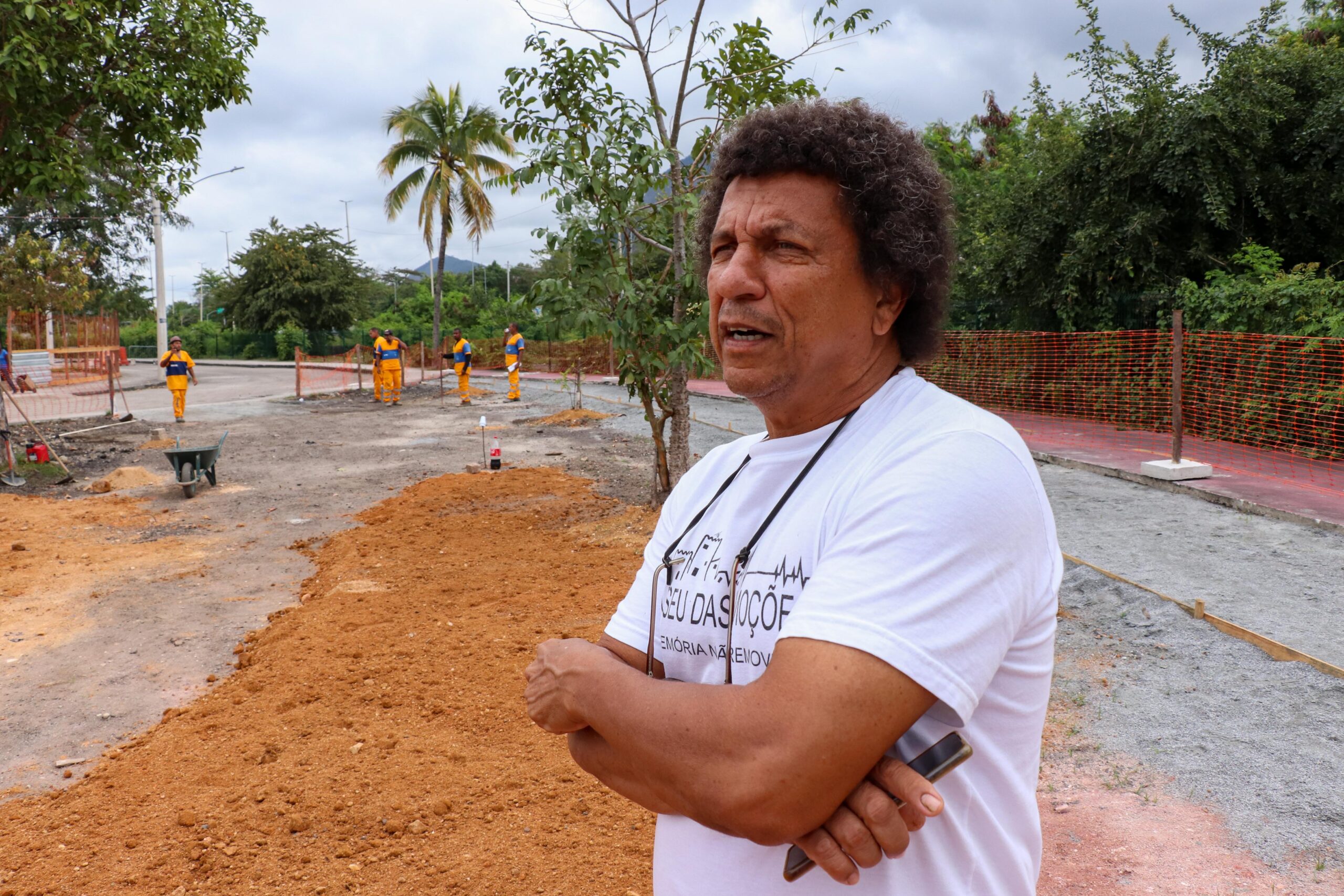
In a similar vein, Silva expresses how the construction of these spaces will finally benefit Vila Autódromo. According to him, these benefits will be felt in two ways: through the access to leisure and by preserving the community’s memory: “The court was a 12x24m multi-sports court; what they call a community center in their project we, residents, call a cultural center. It will function as a residents’ association and cultural center and will be part of the Evictions Museum. We will finally have a space for our museum. Just yesterday we had a group here from PUC-Brasília and we had nowhere to exhibit our collection. Now we will have this space to serve the community.”
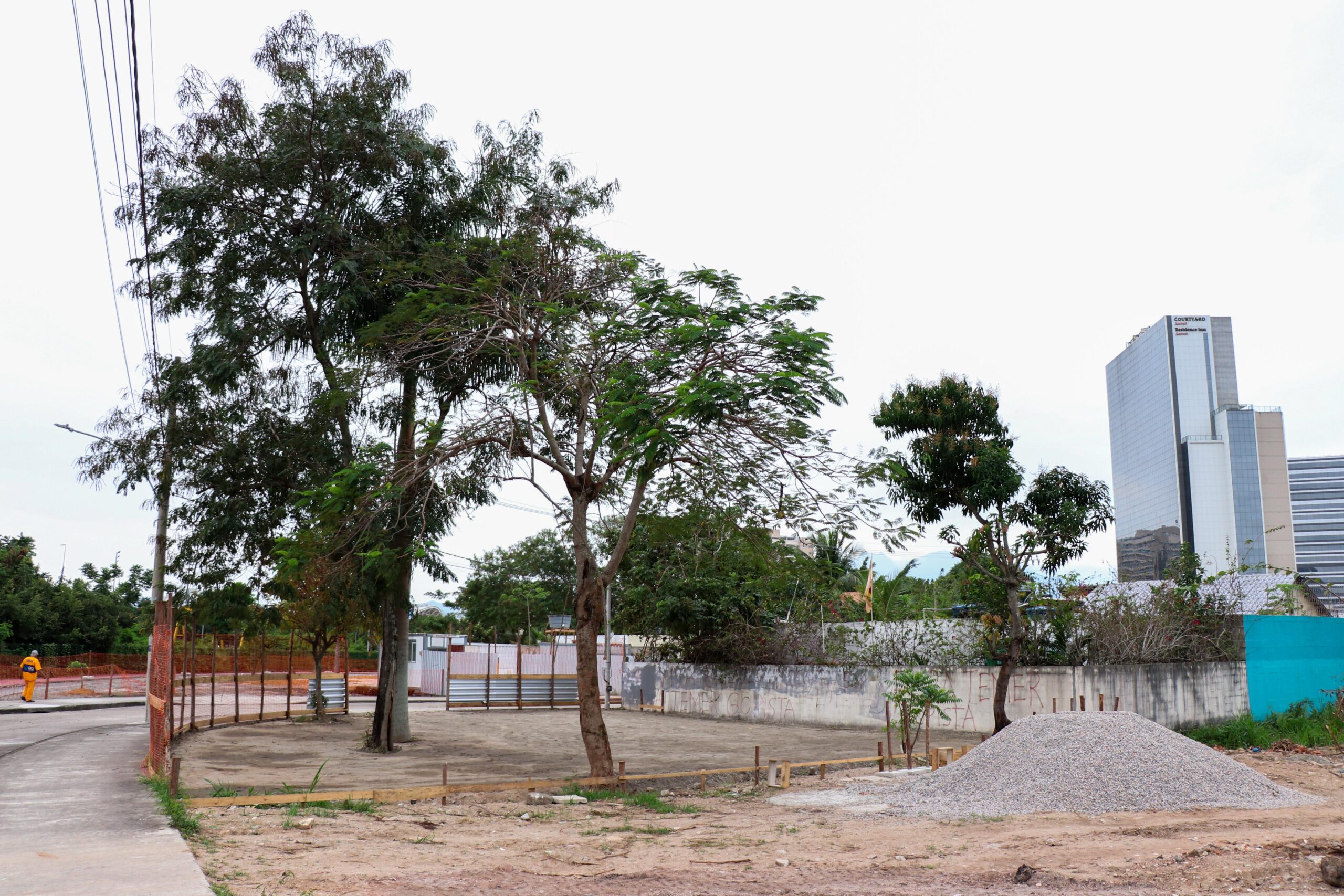
An employee of Municipal Upgrading Company, Luis Felipe, 22, has been working on the construction project. He shares what he thinks about the work he has been doing: “I want to say that moving forward the construction will look good, everything is going to plan and will only improve. Then the children will come to play, there will be a court out front, great stuff. The kids need soccer to distract their minds, to have something other than a cell phone. Nowadays everything is on a cell phone, so, with the court, the swings and other equipment, they’ll come out and play. And that’s it, the construction is underway and from now on it will only get better. We start at 7am and finish at 5pm [every day] until next year.”
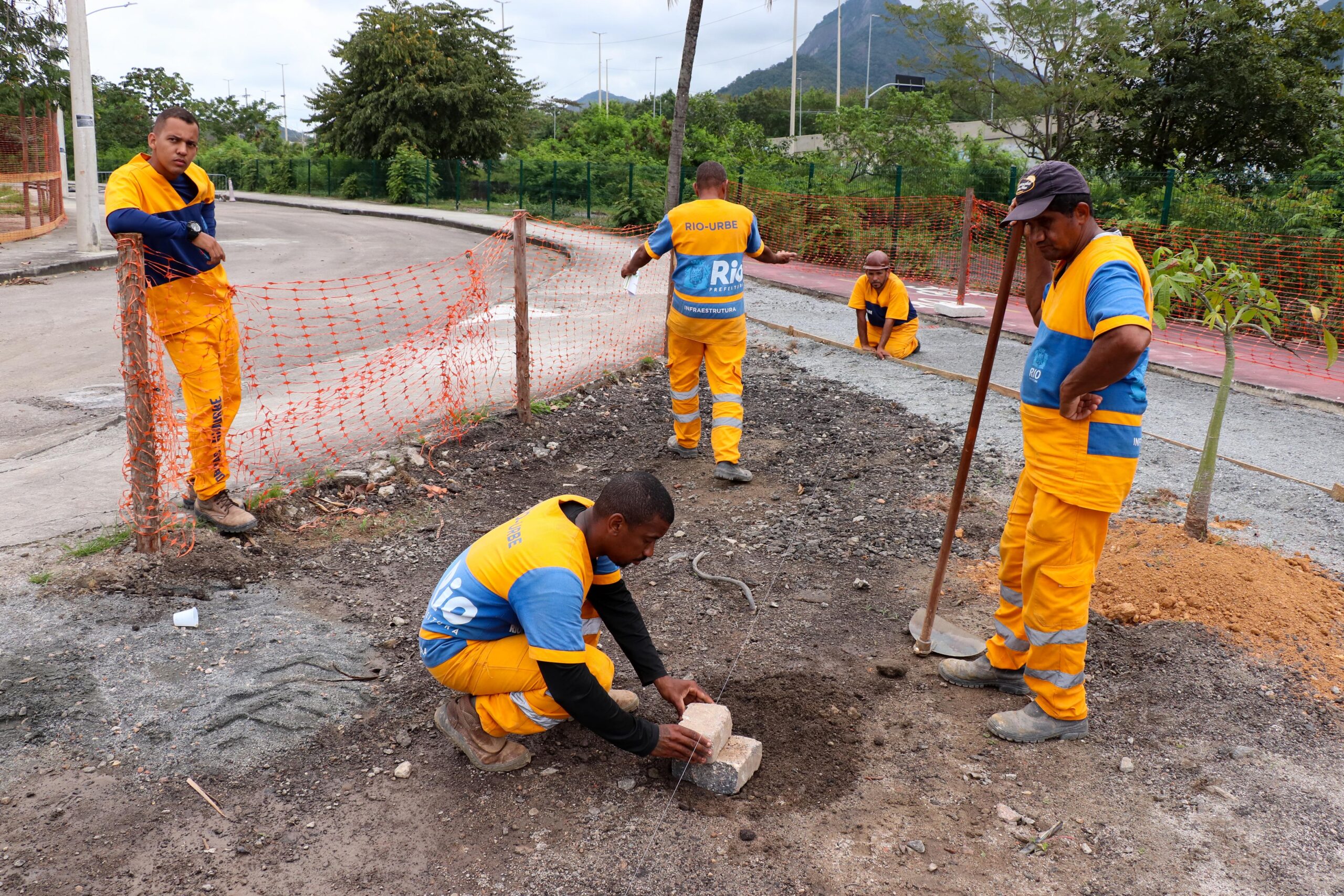
Macena highlights the lack of dialogue with the city and the absence of residents from the process—a common problem between governments and Rio’s favelas: “They don’t come looking for us. I remember that we approached them while they were measuring [spaces in the community], if I’m not mistaken in 2019, while Crivella was still mayor. We went up to this group of people from the municipality and they said the work would be finished. Then they disappeared and never came back, they disappeared and appealed again. At the beginning of June, they came with a group of people to look at the spaces and Luiz went to talk to them. The authorities send a group but then they go back and don’t talk to anyone. They look, they leave and decide what they’re going to do [without listening to us], which is wrong. It should be [something that is] built together: [by] residents and government officials.”
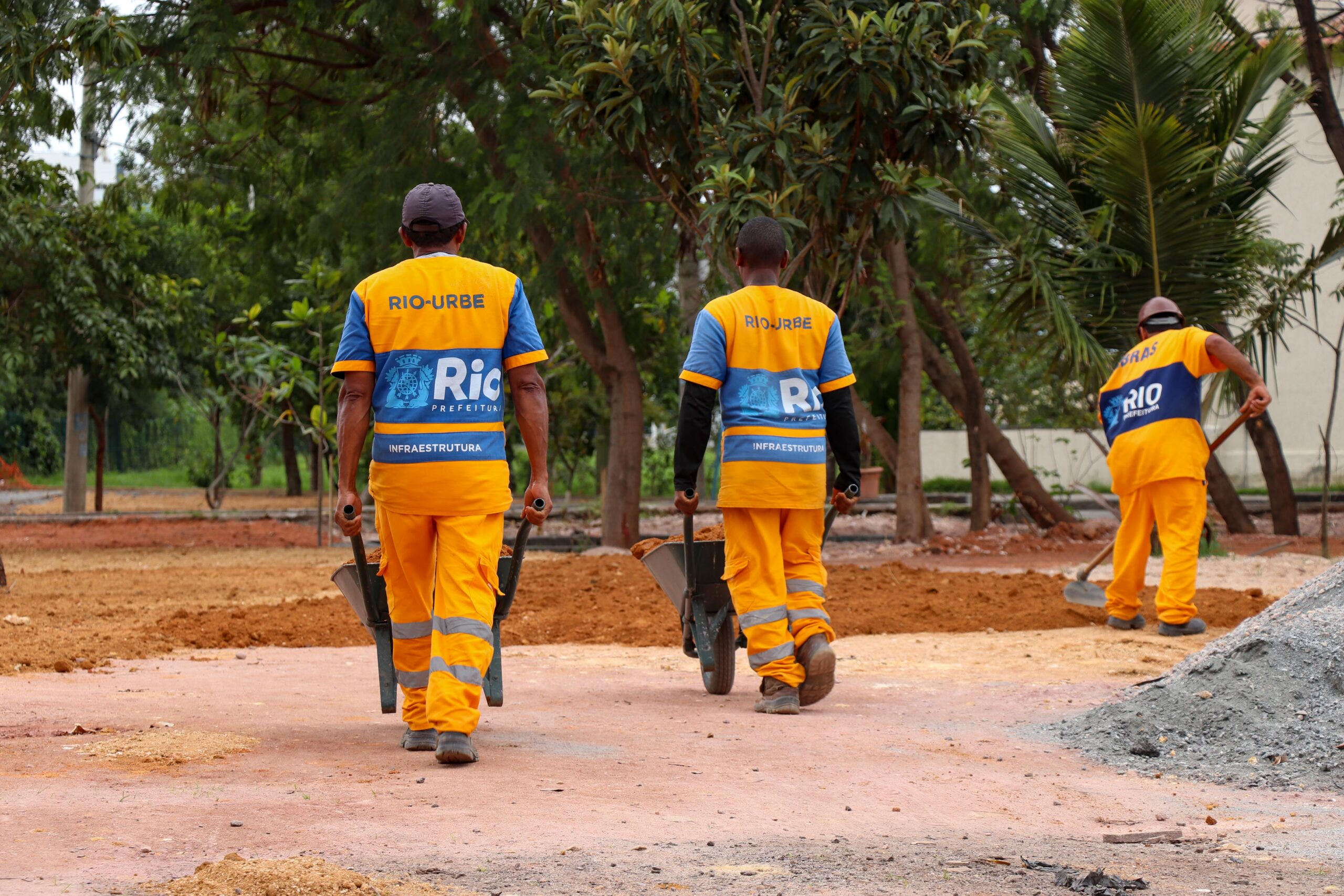
This vertical pattern of decision-making and court battles are reflected by the municipality’s dissatisfaction with residents bringing the Public Defenders’ Office to the table. Maria da Penha highlights: “We asked for a meeting with the Public Defenders’ Office, but they [the City] didn’t like it because they hadn’t brought their legal team along and we were there with our lawyer [from the Public Defenders’ Office]. This is how I see things: if we’ve had a public defender supporting us from the very beginning of this struggle, then everything that happens in relation to the construction work involving the City requires the attendance of the defenders so they can give us assistance, to strengthen us, and so that they can know what is happening. And it’s also nice that the Public Defenders’ Office now sends people to follow up and verify that the work is really happening.”
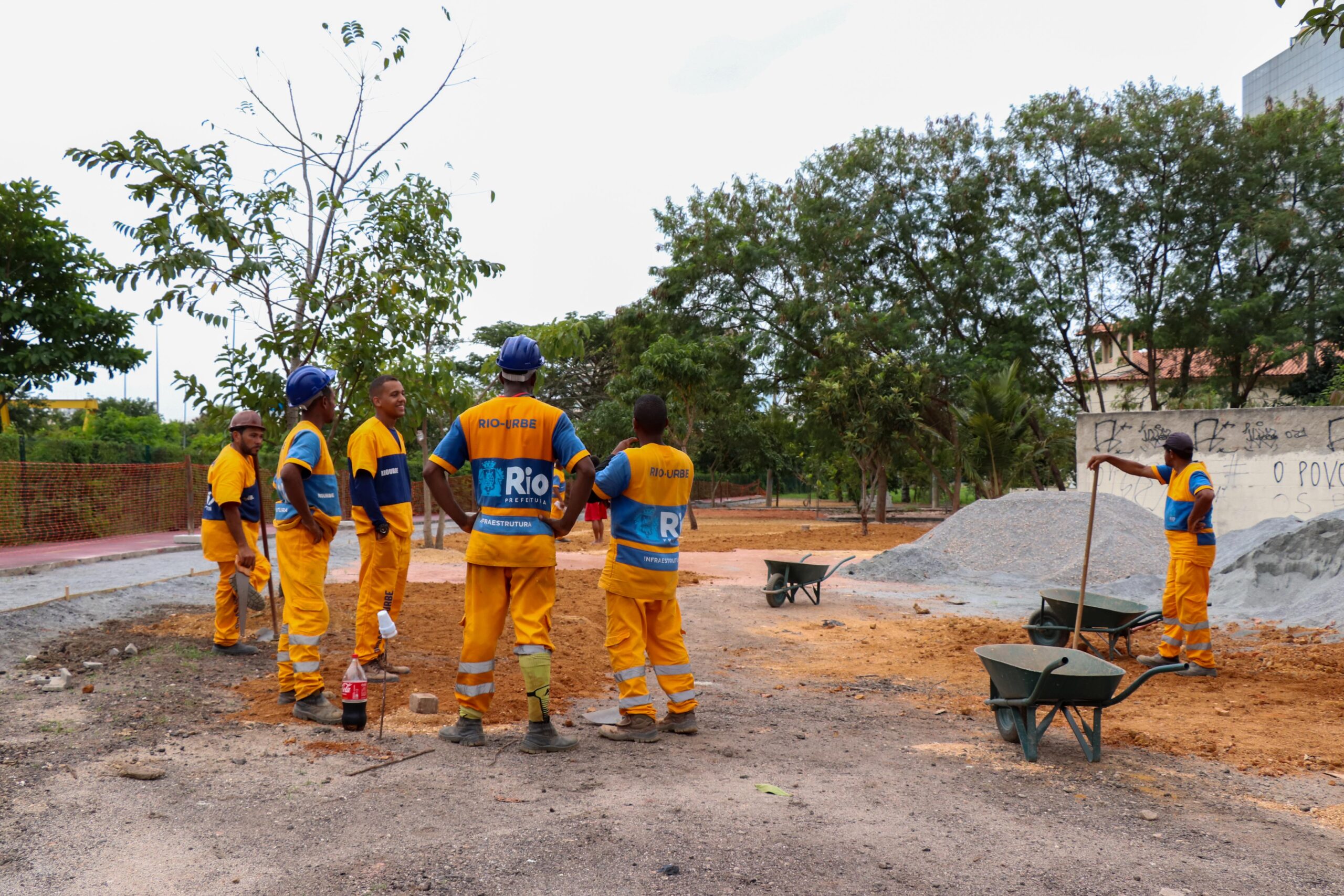
Silva says that even after the work is finished, the agreement with the City will not yet be entirely fulfilled since the houses still don’t have the “Habite-se”—a building’s certificate of occupancy—and individual documentation for each of the 20 houses.
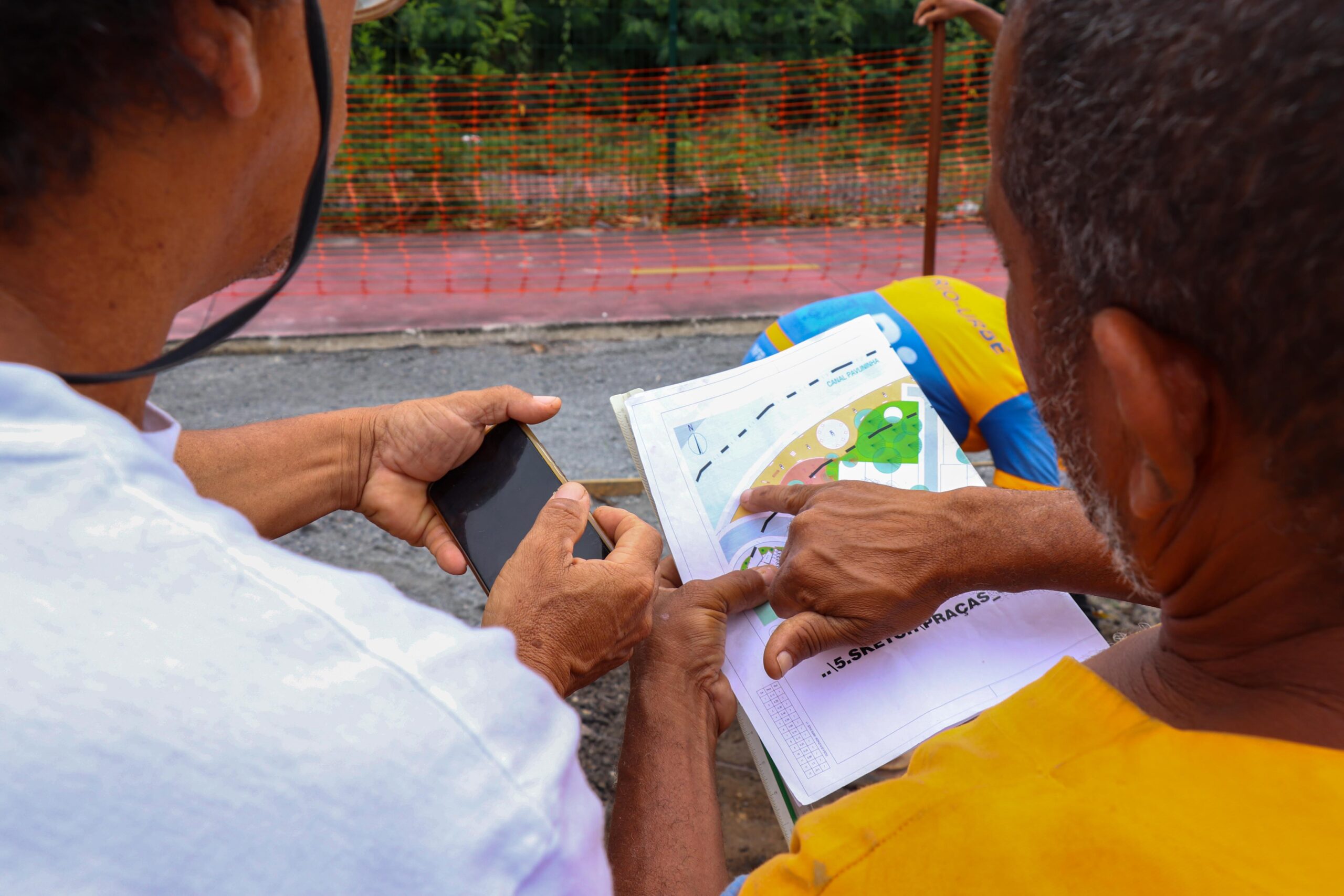
“We occupied these houses without the Habite-se. They keep saying they’re ready, but they never reach our hands. These are individual documents. The permit we have is collective. We will have to fight harder,” says Silva.
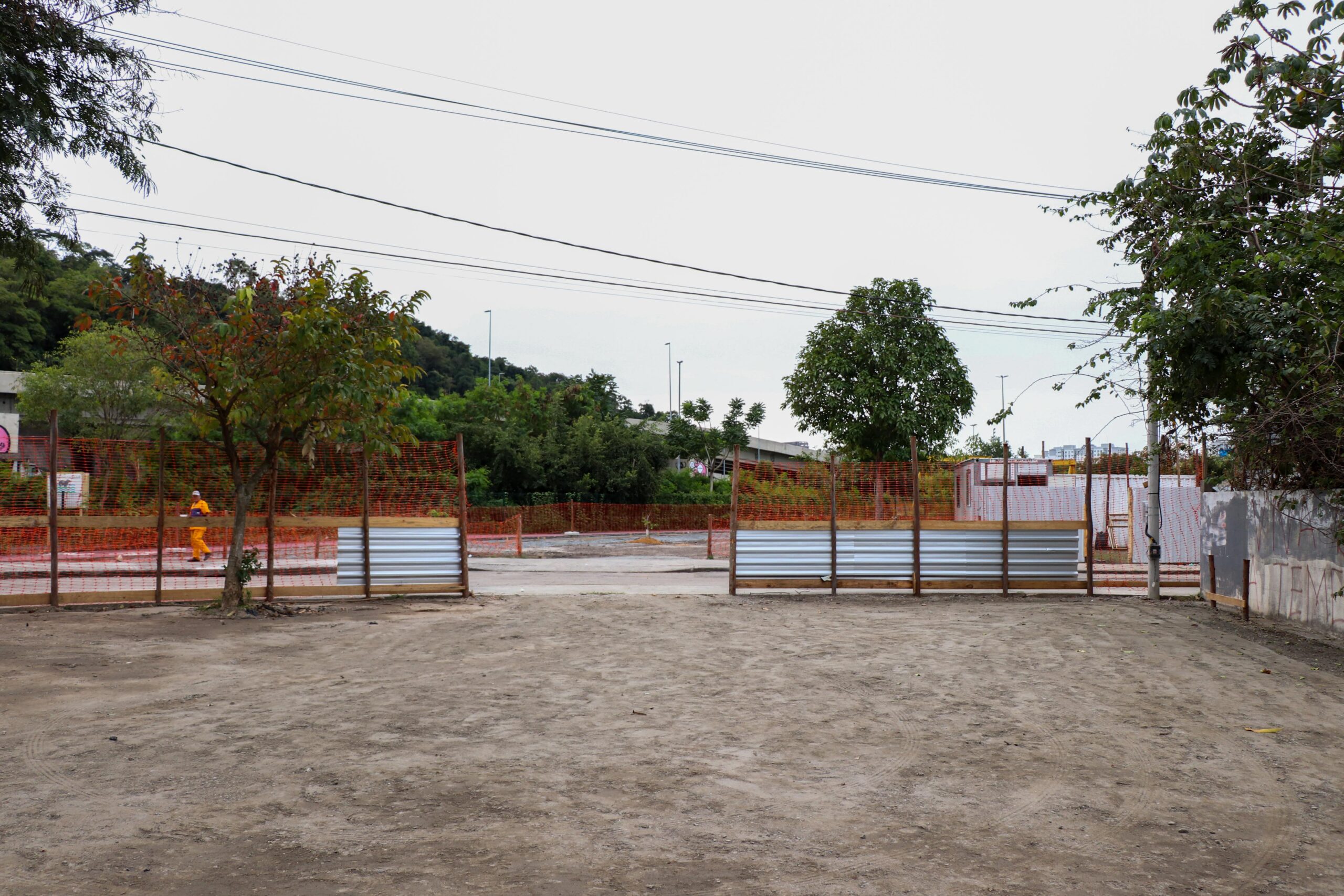
Macena summarizes the thoughts of the community: “We think that… the mayor is doing this… because deep down he is being forced by the justice system to comply with an agreement from six years ago.”

During the pre-Olympic process of fighting for the right to housing and to remain, at least seven key elements characterized Vila Autódromo and dozens of favelas’ resistance:
- Unity in residents’ commitment to remain in their territories
- Access to information
- Legal defense
- Diverse and resolute leadership
- Broad support networks ranging from peer communities to technical partners
- Creative responses such as the People’s Plan and the Evictions Museum
- Ongoing documentation and visibility
Documenting the delayed start of construction works in Vila Autódromo is part of the community’s resistance strategy. This article is thus the first in a two-part series, as the completion of Vila Autódromo’s community spaces will also be recorded. Residents of Vila Autódromo have shown us: we must keep the memory of this struggle alive!
